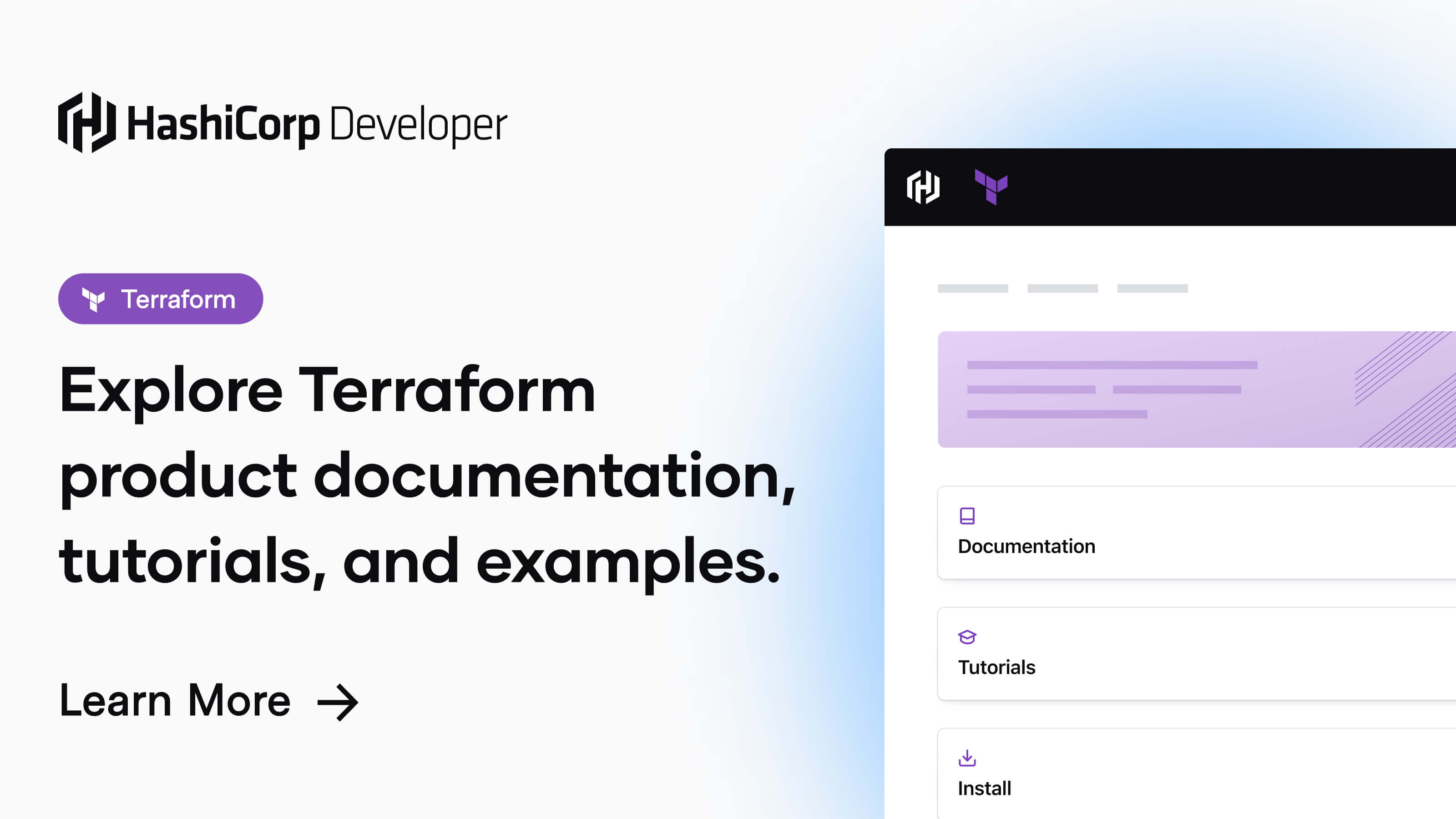Access Terraform Module State in Remote State File?
Learn how to access the state of individual Terraform modules within a remote state file and streamline your infrastructure management.
Learn how to access the state of individual Terraform modules within a remote state file and streamline your infrastructure management.
In Terraform, accessing values from another module's state file is exclusively achieved using the terraform_remote_state data source. This data source allows you to retrieve output values defined within the remote state. As demonstrated in the provided code snippet, you can fetch the subnet_id output from the network module's state file. However, it's crucial to understand that terraform_remote_state establishes an implicit dependency on the remote state's output values.
You can only access the output values of a module using terraform_remote_state.
data "terraform_remote_state" "network" {
backend = "local"
config = {
path = "../network/terraform.tfstate"
}
}
resource "aws_instance" "app_server" {
ami = "ami-0c94855ba95c574c9"
instance_type = "t2.micro"
subnet_id = data.terraform_remote_state.network.outputs.subnet_id
}It's important to note that terraform_remote_state creates an implicit dependency. This means that changes to the output values in the remote state could break your current configuration.
If you need to access resources that are not defined as outputs in the remote state, you need to modify the module that manages those resources and define the necessary outputs.
Alternatively, you can refactor your code to avoid using remote state for accessing resources directly. This can involve restructuring your modules or using alternative approaches like shared modules or data sources for specific use cases.
This code demonstrates using terraform_remote_state to access outputs from a separate Terraform module's state file. The first module provisions network resources and outputs the subnet ID. The second module accesses this output to launch an EC2 instance in the correct subnet. However, it highlights a limitation: you can only access output values, not resources directly. Attempting to reference resources like the VPC ID from the remote state results in an error. Solutions include defining necessary outputs in the first module or refactoring code to avoid direct resource access, such as using data sources to fetch information based on tags. Over-reliance on remote state can lead to tight coupling and complexity, so careful consideration is advised.
This example demonstrates how to access output values from a remote state file using terraform_remote_state and highlights the limitations of this approach.
network/main.tf (Module to manage network resources):
resource "aws_vpc" "example" {
cidr_block = "10.0.0.0/16"
tags = {
Name = "Example VPC"
}
}
resource "aws_subnet" "example" {
vpc_id = aws_vpc.example.id
cidr_block = "10.0.1.0/24"
tags = {
Name = "Example Subnet"
}
}
# Output the subnet ID
output "subnet_id" {
value = aws_subnet.example.id
}app/main.tf (Module to deploy an EC2 instance using the remote state):
data "terraform_remote_state" "network" {
backend = "local"
config = {
path = "../network/terraform.tfstate"
}
}
resource "aws_instance" "app_server" {
ami = "ami-0c94855ba95c574c9"
instance_type = "t2.micro"
subnet_id = data.terraform_remote_state.network.outputs.subnet_id
}
# This will cause an error because aws_vpc.example is not an output
# resource "aws_security_group_rule" "allow_ssh" {
# type = "ingress"
# from_port = 22
# to_port = 22
# protocol = "tcp"
# cidr_blocks = ["0.0.0.0/0"]
# security_group_id = data.terraform_remote_state.network.aws_vpc.example.id
# }Explanation:
subnet_id which exposes the subnet ID.terraform_remote_state to access the state file generated by the network module. It retrieves the subnet_id output value and uses it to provision an EC2 instance in the correct subnet.data.terraform_remote_state.network.aws_vpc.example.id) will result in an error.Solutions:
network module to include an output for the VPC ID if you need to access it in other modules.Remember that relying heavily on remote state can lead to tight coupling between modules and make your infrastructure harder to manage. Carefully consider the trade-offs before using this approach.
terraform_remote_state creates an implicit dependency between your configurations. This means Terraform will try to ensure that the remote state is updated before applying changes to the configuration that depends on it. While this enforces a relationship, it can lead to unexpected issues if the remote state changes unexpectedly.terraform_remote_state can lead to tight coupling between modules, making your infrastructure less modular and harder to refactor. Changes in one module's outputs could potentially break other modules that depend on them.terraform_remote_state when absolutely necessary. Strive for modularity and loose coupling between your configurations.By understanding the implications and limitations of terraform_remote_state, you can make informed decisions about its usage and design more robust and maintainable infrastructure.
This article explains how to access resources managed by a different Terraform module using terraform_remote_state.
Key Points:
data.terraform_remote_state.RESOURCE_NAME.outputs.OUTPUT_NAME.terraform_remote_state creates an implicit dependency on the remote state. Changes to the remote state's outputs can impact your current configuration.Example:
The provided code snippet demonstrates accessing the subnet_id output from a remote state named "network" and using it to provision an EC2 instance.
Recommendation:
While terraform_remote_state can be useful, be mindful of the implicit dependency it creates. Consider refactoring your code to minimize dependencies and improve maintainability when possible.
In conclusion, terraform_remote_state provides a mechanism to access output values from another Terraform module's state. While useful for sharing information between modules, it's crucial to understand its limitations. You can only access output values, not resources directly, and it creates an implicit dependency that can lead to tight coupling. Over-reliance on terraform_remote_state can impact modularity and maintainability. Consider alternative approaches like shared modules or data sources to minimize dependencies and enhance your infrastructure's robustness. Remember to carefully define outputs in modules intended for remote state sharing and version your modules to track changes effectively. By understanding these aspects, you can leverage terraform_remote_state appropriately and build more manageable and scalable infrastructure.
 The terraform_remote_state Data Source | Terraform | HashiCorp ... | Retrieves the root module output values from a Terraform state snapshot stored in a remote backend.
The terraform_remote_state Data Source | Terraform | HashiCorp ... | Retrieves the root module output values from a Terraform state snapshot stored in a remote backend. Sharing state data across different terraform configurations using ... | I’ve been reading many different opinions on how to share state between terraform configurations. Currently refactoring a monolith into environments/components… Google terraform best practices recommend to not use data sources for resources managed in other TF configurations as “it creates implicit dependencies on resource names and structures that normal Terraform operations might unintentionally break.” They recommend terraform_remote_state. But I’ve also read mixed opinions on using that o...
Sharing state data across different terraform configurations using ... | I’ve been reading many different opinions on how to share state between terraform configurations. Currently refactoring a monolith into environments/components… Google terraform best practices recommend to not use data sources for resources managed in other TF configurations as “it creates implicit dependencies on resource names and structures that normal Terraform operations might unintentionally break.” They recommend terraform_remote_state. But I’ve also read mixed opinions on using that o... Using multiple modules / remote state - Gruntwork Customers ... | Hi there, I new to Terragrunt and keen to give it a go - something I couldn’t see by reading the GitHub page is if you’re able to use multiple modules when writing a plan… or is the idea to separate each component into it’s own module with it’s own state file? On that note, I didn’t see examples of using using the remote state / outputs from another plan, is that possible with Terragrunt? e.g. can I create a VPC and have another plan use it’s id output?
Using multiple modules / remote state - Gruntwork Customers ... | Hi there, I new to Terragrunt and keen to give it a go - something I couldn’t see by reading the GitHub page is if you’re able to use multiple modules when writing a plan… or is the idea to separate each component into it’s own module with it’s own state file? On that note, I didn’t see examples of using using the remote state / outputs from another plan, is that possible with Terragrunt? e.g. can I create a VPC and have another plan use it’s id output? Deploying Multiple Environments with Terraform | by Chris Pisano ... | Terraform is a great tool for provisioning immutable infrastructure. It allows you to create infrastructure programmatically in a…
Deploying Multiple Environments with Terraform | by Chris Pisano ... | Terraform is a great tool for provisioning immutable infrastructure. It allows you to create infrastructure programmatically in a… Terraform Output Values : Complete Guide & Examples | What are Terraform outputs? See the different options for their configuration and how Terraform handles and exports output values between modules.
Terraform Output Values : Complete Guide & Examples | What are Terraform outputs? See the different options for their configuration and how Terraform handles and exports output values between modules.